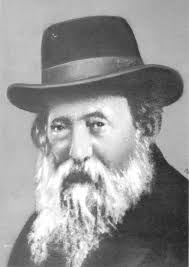BS”D
Suka 13a (2)
Kislev 1, 5781. November 17, 2020
1- The Gemara introduces the discussion about the definition of a ‘bunch’. אגד.
The Torah requires in three instances to take אזוב אגודת – hyssop, in a ‘bunch’.

Hyssop
[We mentioned in the past that the Bartenura identifies this אזוב as the za’atar plant].

Za’atar
In מצרים when applying the פסח blood on the doorpost, when purifying a טמא מת with the אפר הפרה and the purification of the מצורע.

What is the meaning of אגודה? One אזוב stem is obviously not a ‘bunch’. Is it two or three?

2- We discussed the topic of גרדומי – Gardumi – Stubs.
Briefly – when the Torah instructs one to perform a Mitzvah, say מקווה, one needs to fill a מקוה with 40 סאה.
Now this מקוה needs to always be a full 40 סאה. If it drops to 39 it’s not a valid מקוה.
Another example – לולב. It needs to be a minimum of 4 טפחים. So if one starts with 4 and shakes it violently and it shrinks to 3, it is obviously פסול.
This is very logical and applies to all מצוות that require a שיעור.

However, we find that two מצוות that require one to start with a particular שיעור, but interestingly enough, if this שיעור becomes smaller, less that what is originally required, it is still Kosher!
These two Mitzvos are אזוב and ציצית. With ציצית one must start with about 9.9 inches in length. But if they tear and become shorter it is still Kosher.
Ditto for the bunch of אזוב. Even is there is just a bit left, enough to be able to dip it into the מים של אפר החטאת , it is Kosher.
See the source for this in the Gemara here.
אמרי בי רב חייא: גרדומי תכלת וגרדומי אזוב כשירין.
The children of Rav Chiya said: Stubs (remnants) of Tzitzis and the Eizov are Kosher.
3- What is perplexing is that no reason is offered in the Gemara and not in the ראשונים, as to why these two מצוות are the exception to the rule. Amazing indeed.
The Chasam Sofer was asked by Reb Shlomo Kluger of Brodi for an explanation. (The topic discussed there is a Sefer Torah that aged and its letters turned from black to brown/red).
See here. YD 256 ומה שהקשה.
He begins to explain but finishes off saying ”and whoever, whose intelligence is greater than ours, will offer a logical explanation, we will graciously accept it” !!!

Reb Meir Simcha of Dvinsk
4- We spoke about the explanation of the אור שמח, by Reb Meir Simcha of Dvinsk. See here. – אור שמח הל’ לולב פ’ ז’ הל’ ח
It’s a very deep and subtle idea. See below in different words.

Reb Chaim Oizer Grodzinski
In the Yeshiva world there is a story about the above אור שמח. When the Rov of Vilna, Reb Chaim Oizer Grodzinski, would test Yeshiva Bochurim he would ask them to explain to him, in their own words, the meaning of this particular אור שמח!

Reb Pinchos Hirshprung
5- Mentioning Reb Chaim Oizer, we spoke about Reb Pinchos Hirshprung of Montreal.
- His photographic memory. His life.
- His relationship with the Rebbe.
- The publishing house that planned to print his biography. When his family agreed but with the condition that the above relationship be mentioned, they refused. The family printed it on their own.
- His genuine memoirs he wrote right after the war. The unadulterated english translation.
- Vale of Tears. Available on Amazon.

- His encounter with Reb Chaim Oizer during the war. His dilemma of whether to enter Russia to get to Japan.

- Reb Chaim Oizer’s advice. The Chassidisher Bochur who went to hear Reb Chaim Ozer’s advice while planning to do just the opposite……
- Who was right at the end?
See below a clear explanation on the Chasam Sofer, and Or Sameach mentioned above, from the Tolna Rebbe, R Yitzchok Menachem Weinberg:
תירוץ עמוק על הקושיא העצומה של רבי שלמה קלוגר מופיע בספר “אור שמח” על הרמב”ם לגאון המפורסם רבי מאיר שמחה אב”ד דווינסק. האור שמח נמצא בהל’ לולב בפ’ ז’ הל’ ח’ היסוד של גרדומים נובע מכך שיש בקיום המצוה משך זמן, אזוב שכבר טיהר אדם אחד יכול לטהר גם את האחר, משום שכבר חל עליו שם של גרדום, כך גם לגבי ציצית, ואין להתפלא על כך שאדם מסוים נטהר באזוב קטן, ואילו זה שקדם לו היה עליו להיטהר באזוב גדול, אנו מוצאים הבדל בין שני האנשים. אדם זה שנטהר באזוב גדול, נטהר בבוקר, ואילו זה שנטהר באזוב הקטן נטהר אחריו מובן מדוע מספיק לטהרתו גם אזוב קצר, כך גם לגבי ציצית, הבגד שבתחילת ברייתו נקשר עם חוטי ציצית ארוכים יכול מעתה להיפטר גם עם חוטים קטנים, ואין לתמוה ע”כ כיצד יתכן שבגד שחייב בציצית יפטר בחוטים קטנים, משום שבגד זה עצמו כבר נפטר באותם חוטים, וכיון שכך אנו מבינים את ההבדל בין הבגד שהיה עליו להיפטר עם חטים גדולים לבין הבגד שנפטר עכשיו עם חוטים קטנים.
אבל לגבי לולב ושופר אין הבדל בין לולב בבוקר לבין לולב אחר הצהרים, ואין שום חלות דין המבדילה בין אדם שנטל לולב בשחרית בבוקר, לבין למי שנטל אחה”צ, שניהם יצאו את אותה מצות לולב, כך שאם נאמר שאדם שנטל לולב בבוקר ואח”כ נפחת הלולב יוכל אחריו אדם אחר לצאת בלולב קטן, יהיה בזה דבר תימה, כיצד יתכן ששיעור הלולב משתנה לפי הלוקחים, לזה צריך דווקא לולב גדול שלשה טפחים, ואילו לשני מספיק לולב קטן, והרי השני שנטל את הלולב אין בנטילתו המשך לנטילת הראשון, הוא כאילו נוטל לבדו, שהרי אין הבדל בין הנוטל בבוקר לבין הנוטל אחה”צ, שניהם התחייבו בבת אחת וכל אחד מהם יוצא ידי חיובו בשעת נטילה, מה הקשר בין זה שנטל את הלולב בבוקר, לזה שנטל אחה”צ, כדי שיפטר זה שנוטל אחה”צ בלולב שונה מזה שנפטר בבוקר, כך גם לגבי שופר, ולכן אין לדמות גרדומי אזוב ותכלת לגרדומי לולב ושופר.